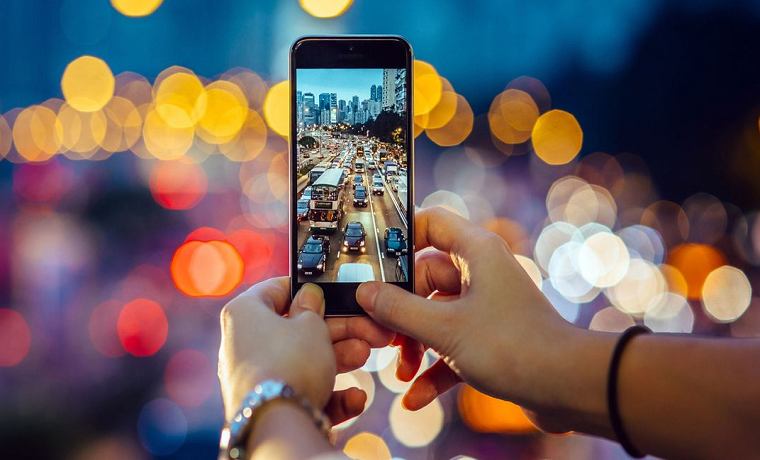Photography has come a long way with more and more sophisticated equipment becoming available. While high-end digital cameras are still used for professional photography, they no longer enjoy the monopoly they had before. Smartphones are becoming a popular choice for taking pictures due to the convenience they offer since almost everybody carries a smartphone. Even a drone for taking selfies is not something unheard of. But of course, phones are the most widely used device for taking pictures.
In spite of the popularity, pictures taken using phone cameras are often of poor quality. However, with the right tips, you can get even your phone camera to take great pictures and up your photography game. Here are a few ways to enhance your phone photography skills.
Take a step or two closer
Zooming in on a subject and then taking a picture often doesn’t work well on a phone. Instead, moving in closer to the subject can give you a better shot. Images shot on the phone could be of a low resolution, and thus tiny subjects in a larger frame are not a good option if you really want to focus on the subject.
Pay attention to the lighting
The lighting is important in any kind of picture, but more so if you are using a phone to capture an image. Taking a picture outdoors with ample sunlight is a good idea. Switch on the lights if taking a shot indoors. Also, except for when you want to capture a silhouette, the light source should be behind you, not behind the subject.
Hold the phone steady
While taking an image, make sure you hold the phone absolutely steady to get great quality pictures. Phone cameras often have a little bit of shutter lag, i.e. there is a slight time lag between the time you press the button to take a picture and when the phone actually takes a picture. This means that if you don’t hold the phone steady long enough, you get a picture captured while you are lowering the phone. For a clear image, hold the phone steady, and keep still a couple of seconds after you have pressed the shutter.
Use grid-lines on the phone camera
This one really works when used well. If you turn on the grid lines on your phone camera, you could potentially take pictures that are clearer, more balanced, and look more natural. Just go to your camera settings and switch ‘grid’ on if it is a feature on your phone. You can find this feature in iPhones and most other Android smartphones. This grid can help you follow the popular photography rule of thirds.
Keep the subject in focus
A good way to get a great picture is to keep the subject in focus. However, filling the entire frame with the subject might not work well. Instead, give the subject one-thirds of the frame space. Having a negative space in the remaining frame will make the subject stand out more and give you a great shot.
Use the editing feature on your phone
Don’t give up on a picture you have just taken because it doesn’t look good. By using filters, balancing the color saturation and contrast, and cropping an image to adjust the frame, you can enhance the picture. While most phone cameras come with inbuilt tools to achieve this, there are apps available that can make a huge difference and elevate your phone pictures.
Keep the phone camera lens clean
Phones are touched too many times a day leaving fingerprints, dust, and dirt on the camera lens. A dirty lens can affect the quality of the image being taken. When you want to do some serious photography using your phone, make sure the lens is cleaned properly before you aim and shoot.
Try editing a picture on a computer
Admittedly, smartphones today come with high-resolution screens that offer good visuals. However, sometimes, a picture that looks average on a phone screen can look much better when viewed on a computer screen. Transferring the images to a computer for the final editing could be a good idea.
Choose the highest resolution from the settings
Most phone cameras will let you choose the resolution settings. It goes without saying that choosing the setting that gives you the highest resolution works best for getting good pictures. The only downside of having high-resolution pictures is that they are larger in size, so if you want to shoot and share, they might take a longer time to transfer.
Keep on experimenting (and learning)
Every phone camera is different, and every photographer is different. Use different angles, different perspectives, and experiment with the settings to see what works best for you. For example, sometimes, a black and white image can really work well compared to a colored picture.
Taking good pictures and enhancing your skills as a modern photographer can be a continuous process. Keep learning and keep fine-tuning your skills to get the best out of your phone cameras!

